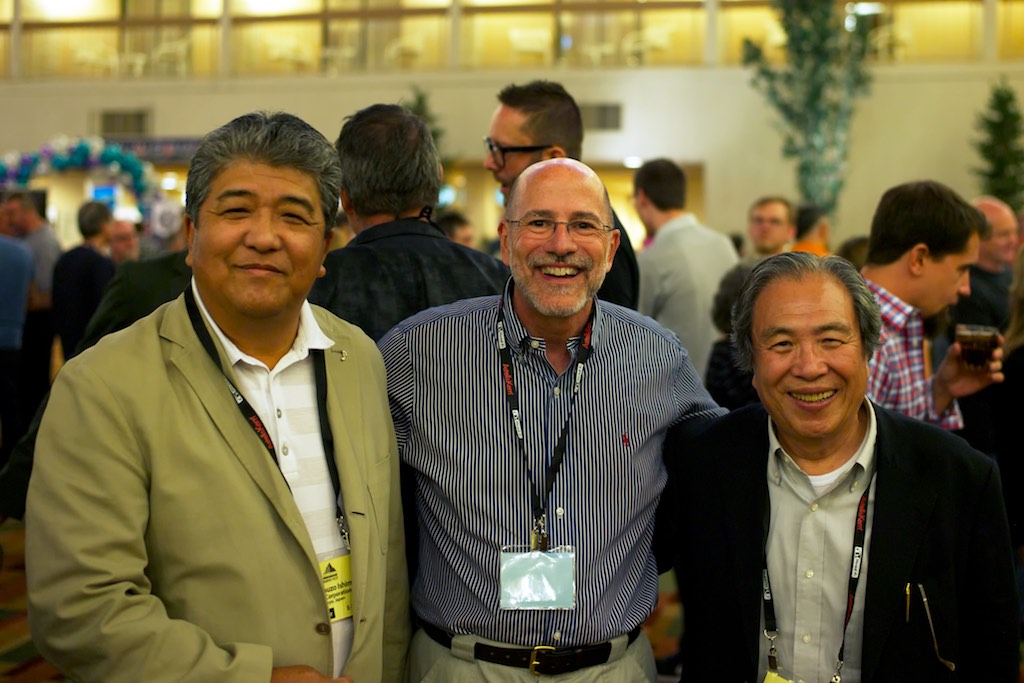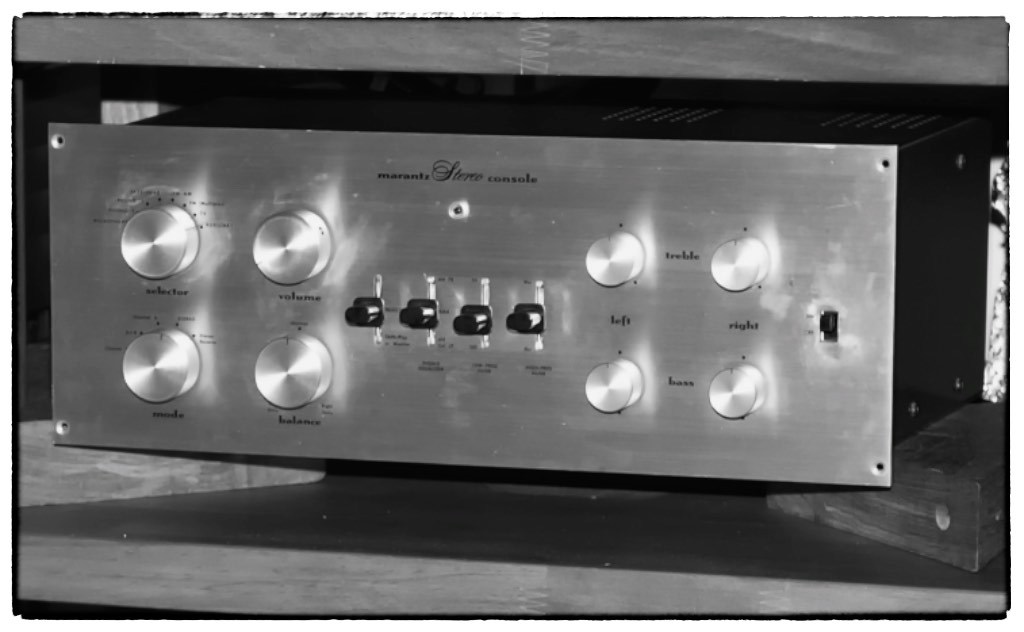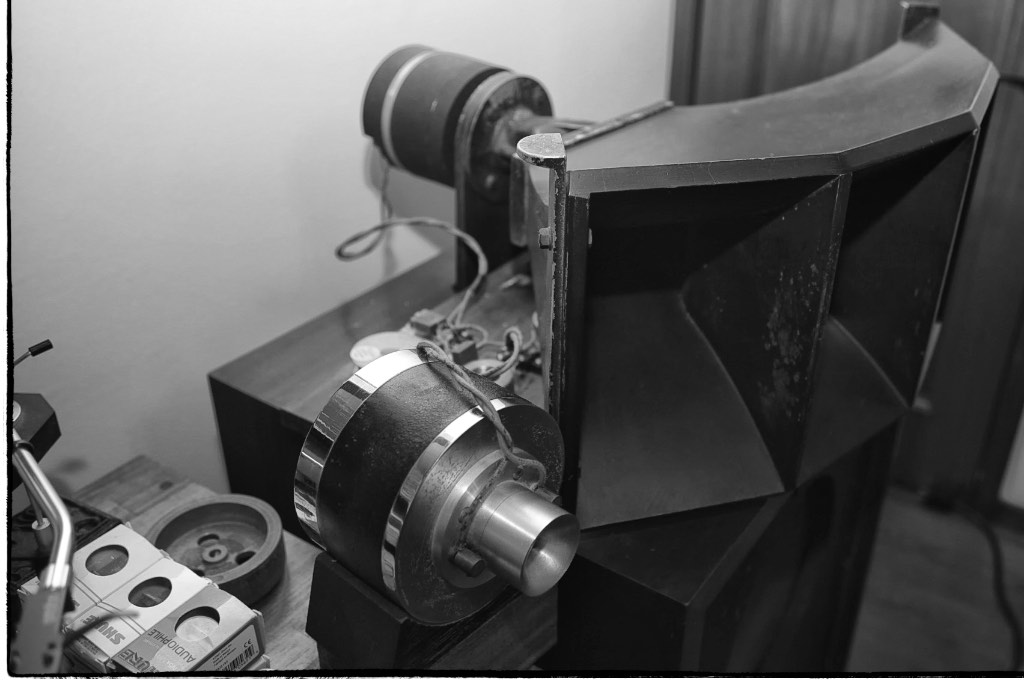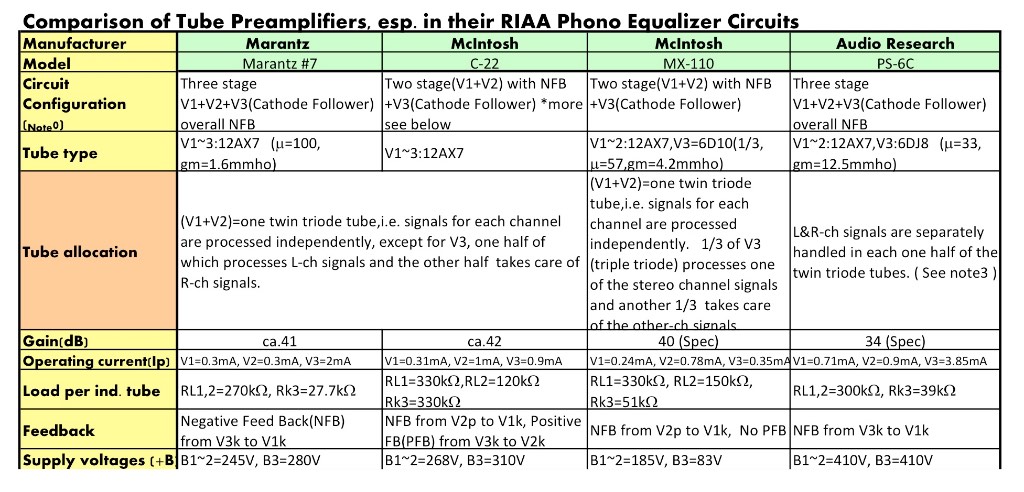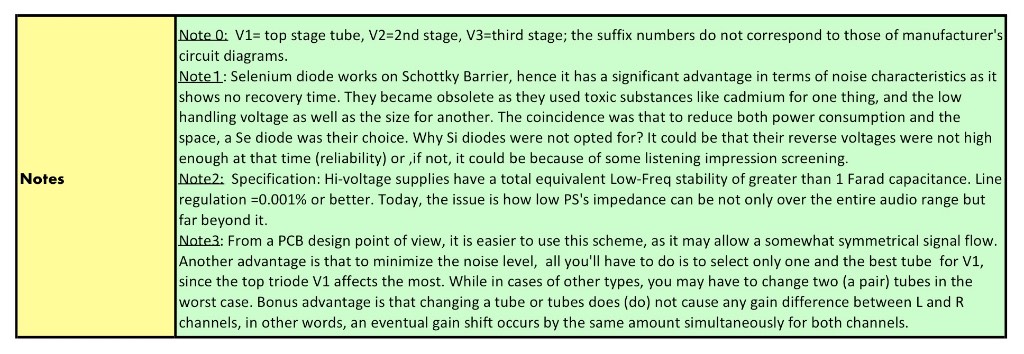In my earlier blog post I introduced Mr. Shirokazu Yazaki to those of you who are new to Jeff's Place, and for the rest of you Yazaki-san needs no introduction, as you have been following the illuminating audio adventures with Yazaki-san for quite some time now.
I met Yazaki-san back in early 2015 while I was preparing the article about the Spec RSA-M3 Real Sound Amplifier for Positive Feedback, and our conversations and audio 'adventures' since then have completely changed the way I think about audio and music reproduction in the home.
Whenever I think upon what Yazaki-san has told me about music & audio over the last few years, and his 'real sound' approach to his own audio system, I am rather amazed by his wisdom for all things audio and music.
What I learned from Yazaki-san about voicing equipment with capacitors, resistors, and tinned-copper wire for 'real sound' was revelatory for me, and that knowledge has empowered me to pursue audio adventures with my own audio equipment that has brought them ever closer to my interpretation of 'real sound' in my home, resulting in what has surely been the most enjoyable & satisfying time that I have ever experienced in this wonderful audio hobby!
Yazaki-san has been so kind as to write an article for us, My Adventure With My Old Marantz Model 7.
In Part 1 of Yazaki-san's article, he told us about his near forty year passion of pursuing 'real sound' with his vintage Marantz Model 7 preamplifier, and the resulting enjoyment & satisfaction that pursuit has brought to his life.
Yazaki-san also shared his thoughts with us about several brilliant design aspects of the Marantz Model 7, and how its design allows it to still hold its own against, or even surpass, anything made today in musical 'real sound' terms.
Yazaki-san told us about his approach to fine-tuning its performance for 'real sound' through a careful selection of internal parts like capacitors and resistors, and finally, hinted at the modifications he was going to tell us about in Part 2 of his article that would take the Model 7's performance to an even higher level.
There's a number of things that Yazaki-san said in his article that particularly impressed me (and I will elaborate upon them even more in the future), but for now let me mention one, the lengthy span of time that he has enjoyed listening to his Marantz Model 7 in his home system, nearly forty years!
There is a tendency for quite a few of us involved in the audio hobby to change preamplifiers, amplifiers, and loudspeakers, for example, in a continuous effort to achieve a combination of musical & sonic performance in our home hi-fi systems that we can truly enjoy.
This 'equipment merry-go-round' approach to obtaining a satisfying musical balance is only occasionally successful, is very expensive, and often leads to frustration & disenchantment with what is otherwise a wonderful hobby of listening to the music you love at home, not to mention the unwanted friction with a significant other that the 'equipment merry-go-round' sort of approach to the hobby can create.
Contrast that to Yazaki-san's approach of making careful onetime choices of a preamplifier, an amplifier, and loudspeakers, for his home hi-fi system, that have provided him a lifetime of satisfaction, and with the added bonus of enjoying the ongoing adventure of subtly voicing them until they perfectly align with his sensibility for Real Sound.
I think there's a number of benefits to Yazaki-san's approach to home audio, the first being that it minimizes major equipment costs over a lifetime of musical enjoyment, while leaving more money for building a library of the music you love.
Yazaki-sans approach also provides a continuing source of entertainment, enjoyment, and satisfaction for the audio hobbyist at a relatively modest cost, while optimizing performance with a few well-chosen capacitors, resistors, or lengths of wire, or to implement a few simple 'hot-rod' modifications here and there, during your audio adventures.
Also, as Yazaki-san has said, this approach rewards the music lover in deeper and more long term ways, because like a fine bourbon, the musical & sonic flavor of components improves as the years go by, for those who are patient enough to let time and the flow of electrons have its way with their hi-fi components.
Yazaki-san's approach is a level of audio wisdom that I am just starting to fully appreciate and understand the importance of, and something that I am learning to incorporate into my own audio experience.
Now, without further ado, here's Part 2 of Yazaki-san's article about his life with the Marantz Model 7k - enjoy!
¸¸.•*¨*•♫♪¸¸.•*¨*•♫♪¸¸.•*¨*•♫♪
My Adventure with My Old Marantz Model 7k
Part 2: My Way of Modification
Dedicated to Saul B Marantz and Sidney Smith for their true masterpiece!
By
Shirokazu Yazaki
Strengthening the Power Supply and the Addition of Decoupling
Half-wave Rectification and Diodes
It might be needless for me to tell you how important the quality of the power supply is, and it would also be true for +B rectification of the Model 7, because the current from the power supply turns into the signal current itself.
There are two major points to the quality of the power supply, one being the noise figure, and the other being the speed of the current from the power supply.
The noise figure decides the noise level of the signal current, and it mainly owes to the characteristic of the diode used for rectification, and the current speed much depends on the characteristic of the capacitor installed into the power supply.
Please take a look at the figure "Comparison of Tube Preamplifiers" by Kato-san, my best friend throughout 40 years.
You can see that the +B rectification scheme of the Model 7 is half-wave (one Selenium diode).
Compared to full-wave rectification, the wave height of the half-wave after rectification is lower, and it means the efficiency of rectification of the half-wave has no advantage to full-wave rectification.
So why did the design geniuses at Marantz decide to adopt half-wave rectification? I can only imagine, but surely they made a hearing comparison test of half-wave to full-wave rectification, and decided to adopt half-wave rectification.
Half-wave rectification needs only one diode, full-wave rectification consists of two diodes, and the diodes (including the Selenium diode) inevitably generates switching noise at some level in the signal spectrum.
You and I could easily reach the conclusion with this qualitative example, that the noise level for two diodes would be higher than for one diode, and that the noise spectrum of the two diodes could be wider than with one diode.
About 10 years ago I heard directly from Atarashi-san, a main writer for “Tube Kingdom”, a Japanese specialist magazine for tube amplifier enthusiasts, who is an authority on vintage tubes, that he preferred the sound of half-wave rectification rather than the full-wave rectification.
His witness might be additional evidence for the superiority of the sound of half-wave rectification, I suppose.
The Marantz designers are worthy of respect for their decision to select half-wave +B rectification for the Marantz 7, I believe.
Well, I have tried and experienced a lot of types of diodes and bridge diodes, including the vintage silicon bridge by Western Electric that was used for telephone exchange machines, as well as many types of the latest SiC SBD's (Schottky Barrier diodes).
I confirmed each diode had a different characteristic sound, and it was beyond my imaginings that they would be so different.
Ten years ago when I became involved in the Class-D solution by International Rectifier, LA (now Infineon Technologies), my quest for an excellent sounding diode was accelerated.
When I searched for the diode for our then top of the line Class-D amplifier, the RSA-F1, I knew from the literature that the Ultra-Fast & Soft Recovery type diodes were cutting edge, and they had been developed to meet the demands of industrial use for getting higher efficiencies from power supplies, and for reducing radiation from the switching noise itself.
But as I said earlier, each diode has its own unique tone for audio purposes, even if it is of the Ultra-Fast & Soft recovery type. Fortunately, I came across a diode with almost perfect characteristics, the STTH6112TV2, in early May of 2010.
I have known well that it was said that the Selenium diode, which was used in the +B power supply, could only provide the musical sound of the original Model 7.
I wondered what the sound differences would be between the Selenium and the Ultra-Fast & Soft Recovery STTH6112TV2.
I got potent evidence from my young friend, Nattawut-san in Bangkok, Thailand. He and his friend, Tanawat-san, started a restoration business for vintage audio products 3 years ago, and they already have gotten a lot of experience with modifications using the STTH6112TV2 in place of the Selenium diode.
He said to me, “The STTH’s sound is more transparent, with lower noise, and the tonal balance seems real, as it should be. I think Selenium’s sound seems sweet because of its higher noise, and that it would add its own character to the sound”.
I fully agree with his impressions of the STTH6112TV2. I can feel the huge & clear sound stage, and the outstanding flat energy balance from the high-range to the richest low-range, with this STTH6112TV2.
Fortunately enough, I have experienced the WE274B engraved vacuum tube rectifier for three years now, and it is often called the Holy Grail for rectifiers, and I have also been using the Marconi U52 (GEC, Osram), the best vacuum tube rectifier I have ever heard.
A little bit figuratively speaking, I feel the sound of the STTH6112TV2 comes very close to those high-quality direct-heated rectifiers, and it could surpass the sound of indirect heated rectifier tubes like the GZ34 and GZ37.
The STTH6112TV2 is nearly free from switching noise so that we could enjoy the virtue of the diode with not only half-wave rectification, but also with full-wave and bridge rectification.
Anyway, I would like to say to the Model 7 lovers out there that are searching for NOS Selenium rectifiers, that I think you can receive the full benefit of the latest progress in science and technology in rectification with the STTH6112TV2.
Also, please consider that the NOS Selenium diodes are now difficult to find, and furthermore they were made from a toxic substance - Selenium - which is best avoided from a health and safety standpoint.
I believe that by using the STTH6112TV2 in place of the Selenium diode, that you could experience another level of sound quality from your Model 7, and be able to receive the full measure of real musicality that the Model 7 is known for.
Capacitors for the Power Supply
When I build up the traditional power supplies for my tube amplifiers, and also for my Class-D amplifiers, I install a hermetically sealed oil-filled capacitor into the subsequent stage of the rectifier tube or diode, connected in parallel with the main electrolytic capacitor for rectification, and its addition provides a more responsive and organic sound.
As you might imagine, the addition of a 0.22~0.47 oil-filled capacitor in this position improves the sound dramatically, addressing the sonic weaknesses of the electrolytic style of capacitors, I suppose.
This improvement could be explained through the measured value of E.S.R. (Equivalent Series Resistance) for the higher frequency range, for example, at more than 10 kHz, for the oil-filled capacitor and the electrolytic capacitor.
Actually, the E.S.R. value of an oil-filled capacitor in the higher range is much lower than with an electrolytic capacitor. E.S.R. would be regarded as the inner electrical resistance of the capacitor, and so it could be expressed as the speed of the current from the capacitor. But we can’t explain the sound differences with only the value of E.S.R.
Generally, the latest PP capacitors (metalized polypropylene capacitor) are proud of their lower value of E.S.R. compared to hermetic seal oil-filled cap, but their sound and tone is far different when compared to the oil-filled capacitor.
When we connect capacitors in parallel with an electrolytic capacitor, I much prefer the sound of the oil-filled capacitor because of its organic tone, which is so sweet & beautiful to my hearing, and I suppose almost all of the readers of Jeff’s Place would like the tone of hermetic sealed oil-filled capacitor too. I would like to express the reason why this is so in the article about the coupling capacitor a little later on.
Well, the way of installing an oil-filled capacitor for signal use on the way out of diode or rectifier tube of your power amplifier could be also very effective for improving the tone and the sound, and so I strongly recommend it to you.
Let's consider that the +B current of the power amplifier directly turns into the driving current for the speaker through the output transformer. A more powerful current with higher speed, flowing through the voice coil, could change the tone of the speaker in a desirable way.
Well, we can hear these sound differences in one listening session, but we don’t have any measurement methods suitable for such a dynamic current moving at high speed to help explain why it sounds better to our ear, so our hearing sense is our best method of measurement at present, I think.
You can see the photos above for one example for strengthening the power supply.
I had completed the restoration & modification of an original Model 7, Serial No. 7-17752, about one year ago at the request of Handoko-san, who lives in Surabaya.
You can see Handoko-san’s listening room below. What an enthusiastic music lover Handoko-san is!
In the power supply modification photos above (left), you can see the bridge diode for the heater of the ECC83 (12AX7) I used for the Model 7. The ECC83 is an indirectly heated tube, so you don't have be too nervous about seeking out a high-quality bridge diode, I think.
But for the peak reverse voltage and the average forward current, a higher quality bridge diode would be better, I suppose.
For Handoko-san’s Model 7, I added high quality mica capacitors to run the switching noise to ground as much as possible, but it is difficult to hear the improvements.
You can also see (right) the Mallory tubular electrolytic condenser, 30μF/450VDC, connected in parallel with the oil-filled capacitor, a Blue Cactus 0.22μF/600VDC.
I felt intuitively that by increasing the capacitance of the main capacitor, that +B rectification would be better and needed.
Luckily, I have some stocks of this desirable sounding Mallory. It not only has an exceptionally low E.S.R. value throughout its entire range, but also it brings out the sound in an entirely satisfactory way.
I don’t hear any particular tonal character from it, but it has rich timbre, and a sound that is responsive, bright, and with an immense sound stage, which is exactly the same first impression I had of it 37 years ago when I completed my Marantz Model 7 kit.
My next challenge is to produce a better sounding electrolytic capacitor, one that could surpass this Mallory, and I already have a prototype of the first sample from Yoneda-san at Nichicon. His engineering sense for technology and also his hearing, is extraordinary, so I have great expectations!
To be continued later!
¸¸.•*¨*•♫♪¸¸.•*¨*•♫♪¸¸.•*¨*•♫♪
Many thanks to Yazaki-san for sharing his life with the Marantz Model 7 with us!
There's a lot to think about and absorb from what Yazaki-san has said in Part 2, and I'm in the process of digesting it all, while at the same time contemplating some adventures based on his recommendations.
I'm already looking forward to reading Part 3 of of Yazaki-san's article My Adventure with My Old Marantz Model 7k, and as Yazaki-san likes to say, please wait for it!
As always, thanks for stopping by, and may the tone be with you!




